-
Product Name
GABARAPL1-Specific antibody
- Documents
-
Description
GABARAPL1-Specific Rabbit Polyclonal antibody. Positive IP detected in mouse liver tissue. Positive WB detected in rat brain tissue, HepG2 cells, human heart tissue, mouse liver tissue. Positive IF detected in Chloroquine treated HepG2 cells. Positive IHC detected in human ovary tumor tissue, human liver tissue. Positive FC detected in HepG2 cells. Observed molecular weight by Western-blot: 16 kDa
-
Tested applications
ELISA, WB, IHC, IP, IF, FC
-
Species reactivity
Human,Mouse,Rat; other species not tested.
-
Alternative names
APG8 LIKE antibody; APG8L antibody; ATG8 antibody; ATG8L antibody; GABARAPL1 antibody; GEC 1 antibody; GEC1 antibody
-
Isotype
Rabbit IgG
-
Preparation
This antibody was obtained by immunization of GABARAPL1-Specific recombinant protein (Accession Number: NM_031412). Purification method: Antigen affinity purified.
-
Clonality
Polyclonal
-
Formulation
PBS with 0.1% sodium azide and 50% glycerol pH 7.3.
-
Storage instructions
Store at -20℃. DO NOT ALIQUOT
-
Applications
Recommended Dilution:
WB: 1:500-1:5000
IP: 1:200-1:2000
IHC: 1:20-1:200
IF: 1:20-1:200
-
Validations
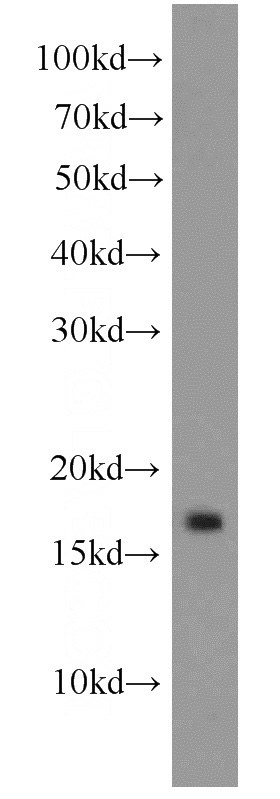
rat brain tissue were subjected to SDS PAGE followed by western blot with Catalog No:110800(ATG8L antibody) at dilution of 1:1000
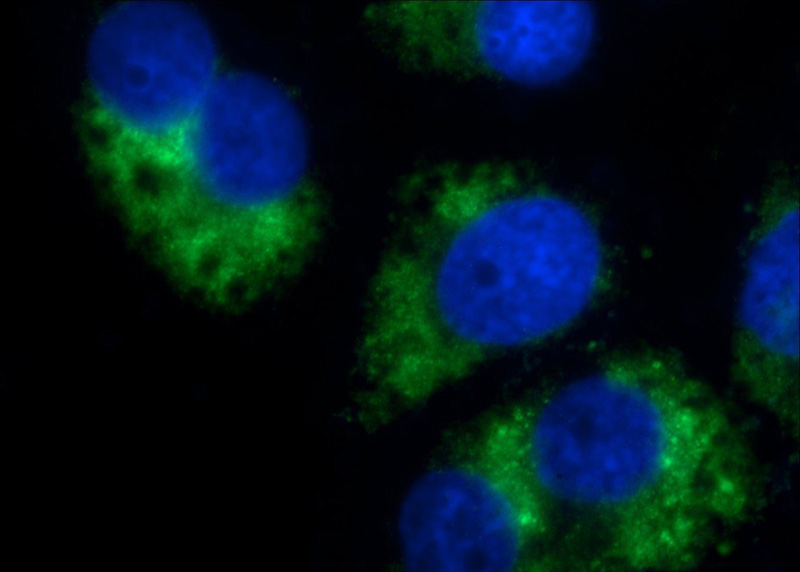
Immunofluorescent analysis of Chloroquine treated HepG2 cells using Catalog No:110800(ATG8L Antibody) at dilution of 1:50 and Alexa Fluor 488-congugated AffiniPure Goat Anti-Rabbit IgG(H+L)
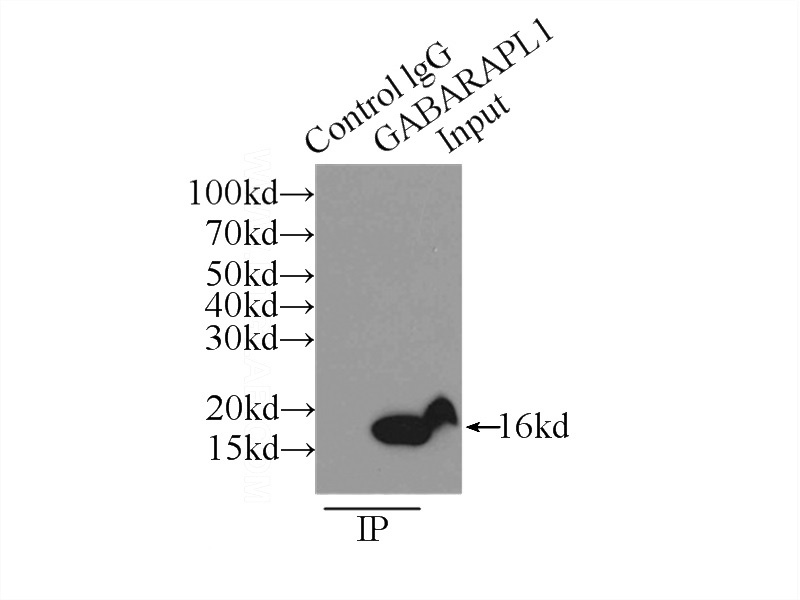
IP Result of anti-ATG8L (IP:Catalog No:110800, 3ug; Detection:Catalog No:110800 1:500) with mouse liver tissue lysate 5000ug.
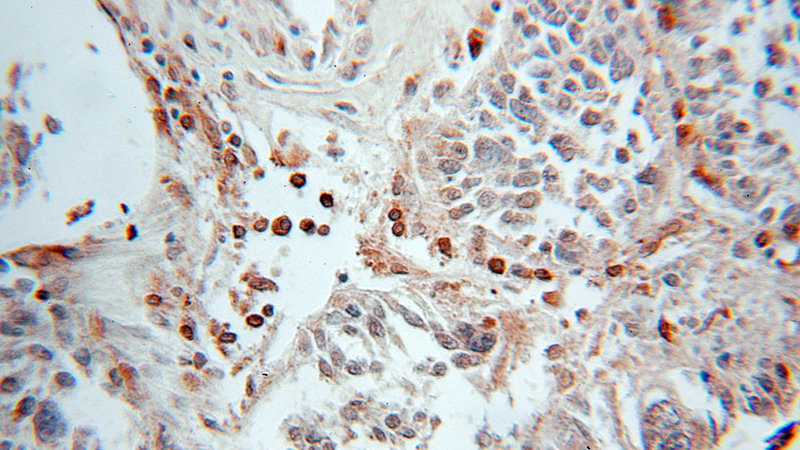
Immunohistochemical of paraffin-embedded human ovary tumor using Catalog No:110800(ATG8L antibody) at dilution of 1:50 (under 10x lens)
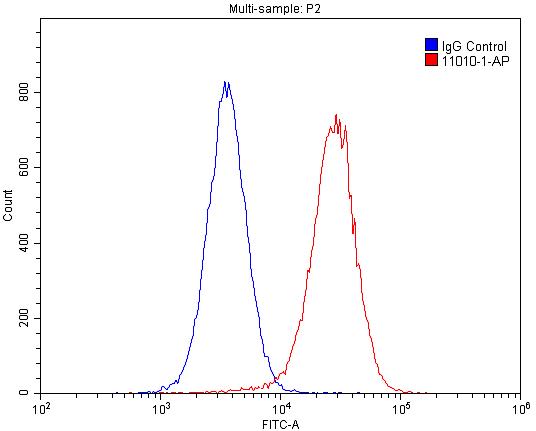
1X10^6 HepG2 cells were stained with 0.2ug ATG8L antibody (Catalog No:110800, red) and control antibody (blue). Fixed with 4% PFA blocked with 3% BSA (30 min). Alexa Fluor 488-congugated AffiniPure Goat Anti-Rabbit IgG(H+L) with dilution 1:1500.
-
Background
GABARAPL1 (GABARAP-like protein 1), also named as ATG8, GEC1, APG8L, ATG8L and APG8-LIKE, is a member of GABARP (GABAA receptor-associated protein) family. GABARAPL1 was initially identified as estrogen-regulated gene and the protein acts in receptor and vesicle transport. It’s also involved in the process of autophagy like GABARAP and GABARAPL2, and may be considered as an autophagic marker. It is expressed at very high levels in the brain, heart, peripheral blood leukocytes, liver, kidney, placenta and skeletal muscle and at very low levels in thymus and small intestine.The antibody is specific to GABARAPL1, and it doesn’t recognize the recombinant GABARAP and GABARAPL2.
-
References
- Boyer-Guittaut M, Poillet L, Liang Q. The role of GABARAPL1/GEC1 in autophagic flux and mitochondrial quality control in MDA-MB-436 breast cancer cells. Autophagy. 10(6):986-1003. 2014.
- Gauthier T, Claude-Taupin A, Delage-Mourroux R, Boyer-Guittaut M, Hervouet E. Proximity Ligation In situ Assay is a Powerful Tool to Monitor Specific ATG Protein Interactions following Autophagy Induction. PloS one. 10(6):e0128701. 2015.
- Keulers TG, Schaaf MB, Peeters HJ. GABARAPL1 is required for increased EGFR membrane expression during hypoxia. Radiotherapy and oncology : journal of the European Society for Therapeutic Radiology and Oncology. 116(3):417-22. 2015.
- Zhao J, Brault JJ, Schild A. FoxO3 coordinately activates protein degradation by the autophagic/lysosomal and proteasomal pathways in atrophying muscle cells. Cell metabolism. 6(6):472-83. 2007.
- Sengupta A, Molkentin JD, Yutzey KE. FoxO transcription factors promote autophagy in cardiomyocytes. The Journal of biological chemistry. 284(41):28319-31. 2009.
- Kassiotis C, Ballal K, Wellnitz K. Markers of autophagy are downregulated in failing human heart after mechanical unloading. Circulation. 120(11 Suppl):S191-7. 2009.
- Mariño G, Fernández AF, Cabrera S. Autophagy is essential for mouse sense of balance. The Journal of clinical investigation. 120(7):2331-44. 2010.
- Jiang S, Heller B, Tagliabracci VS. Starch binding domain-containing protein 1/genethonin 1 is a novel participant in glycogen metabolism. The Journal of biological chemistry. 285(45):34960-71. 2010.
Related Products / Services
Please note: All products are "FOR RESEARCH USE ONLY AND ARE NOT INTENDED FOR DIAGNOSTIC OR THERAPEUTIC USE"
